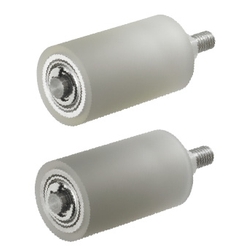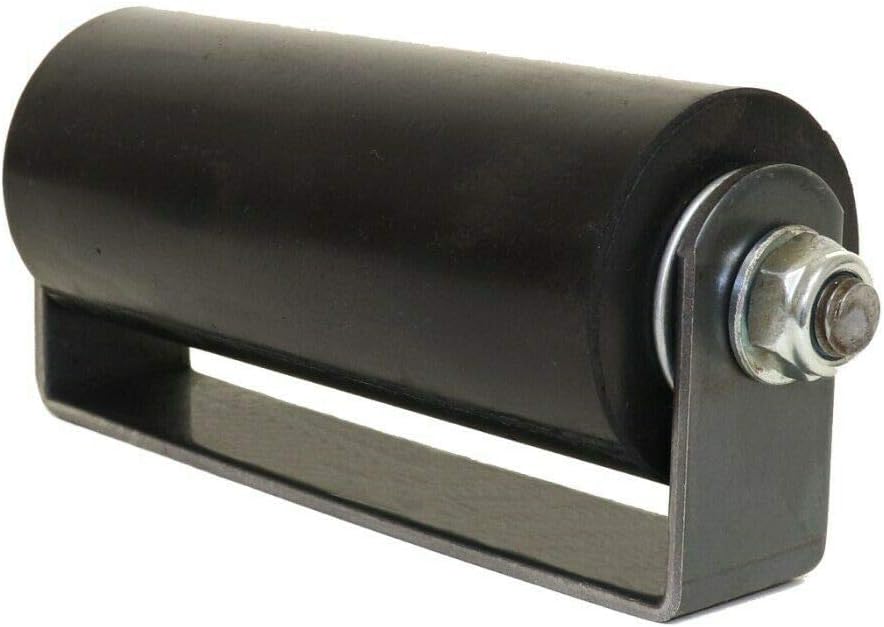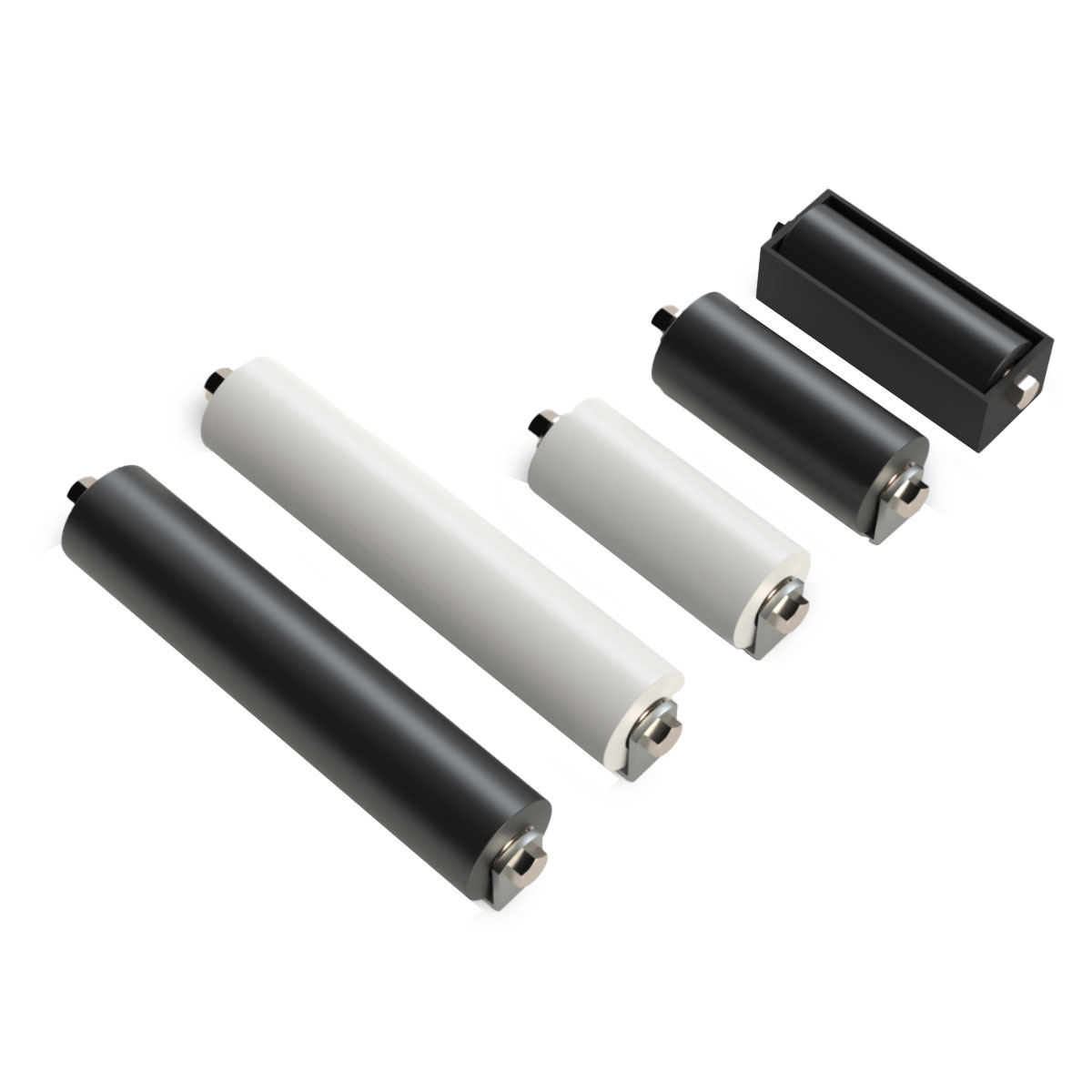Product Description
Mining belt conveyor line guide side CHINAMFG roller
Product Application
Our products are widely used in thermal power generation, harbours, cement plants, metallurgy and as well as the light duty conveying devices for industries.
| SPECIFICATIONS | |||
| Diameter | φ89, φ102, φ108, φ114, φ127, φ133, φ139, φ152, φ159, φ165, φ194 | ||
| Length | 145mm-2800mm | ||
| Tube | Q235(GB), Q345(GB), welded with DIN2394 standed | ||
| Shaft | A3 and 45# steel(GB) | ||
| Bearing | Single & Double Row Deep Groove Ball Bearing 2RS&ZZ with C3 clearance | ||
| Bearing Housing/Seat | Cold press working fit ISO M7 accuracy Deep Press steel with raw material fit DIN 1623-1624 standard |
||
| Lubricating Oil | Grade 2 or 3 long-lasting lithium greasae | ||
| Welding | Mixed gas shielded arc welding end | ||
| Painting | Ordinary painting, hot galvanized painting, electric static spraying painting, baked painting | ||
Main Feature
1) CHINAMFG design, suitable for heavy lifting.
2) The bearing housing and steel tube are assembled and welded with a concentric automatic.
3) Cutting of the steel tube and bearing is performed with the use of a digital auto device/machine/equipment..
4) The bearing end is constructed to ensure that the roller shaft and bearing can be firmly connected.
5) Fabrication of the roller is effected by an auto device and 100% tested for its concentricity.
6) Roller and supporting components/materials are manufactured to DIN/ AFNOR/ FEM/ ASTM/ CEMA standard.
7) The casing is manufactured with highly composite, anti corrosive alloy.
8) The roller is lubricated and free from maintenance.
9) Woring life expectancy is up to 30,000 hours or more, depending on usage.
10)Vacuum sealed which has withstood anti water, salt, snuff, sandstone and dust proof experiments
/* January 22, 2571 19:08:37 */!function(){function s(e,r){var a,o={};try{e&&e.split(“,”).forEach(function(e,t){e&&(a=e.match(/(.*?):(.*)$/))&&1
| Material: | Steel |
|---|---|
| Application: | Chemical Industry, Mining Transport, Power Plant |
| Structure: | Ordinary Roller |
| Bearing Type: | Double Sealed Bearing |
| Type: | Parallel Conveyor Idler |
| Color: | Customized |
| Samples: |
US$ 20/Piece
1 Piece(Min.Order) | |
|---|
| Customization: |
Available
|
|
|---|

What maintenance practices are recommended for guide rollers to ensure optimal functionality?
Maintaining guide rollers is essential to ensure their optimal functionality and longevity. Here are some recommended maintenance practices for guide rollers:
- Regular Inspection:
Perform regular visual inspections of the guide rollers to check for any signs of damage, wear, or misalignment. Look for cracks, dents, or excessive wear on the roller surface. Inspect the mounting brackets, bearings, and axles for any looseness or misalignment. Early detection of issues can help prevent further damage and ensure the guide rollers function properly.
- Cleaning:
Keep the guide rollers clean by removing any dirt, debris, or material buildup. Use a soft brush or compressed air to gently clean the roller surfaces and remove any contaminants that may affect their performance. For stubborn residue, mild cleaning agents can be used, following the manufacturer’s recommendations. Clean guide rollers help maintain smooth operation and prevent potential issues caused by contamination.
- Lubrication:
Proper lubrication is crucial for the smooth operation and longevity of guide rollers. Follow the manufacturer’s guidelines regarding the type and frequency of lubrication required. Apply lubricants to the bearings, axles, or other moving parts as recommended. Adequate lubrication reduces friction, minimizes wear, and helps prevent premature failure or damage to the guide rollers.
- Tension Adjustment:
If the guide rollers are part of a system where tension adjustment is necessary, regularly check and adjust the tension settings as required. Ensure that the tension is within the recommended range to prevent excessive stress on the guide rollers or the conveyed materials. Proper tension adjustment helps maintain accurate alignment and prevents issues such as material slipping or misalignment.
- Replacement of Worn Components:
Monitor the condition of the guide roller components, such as bearings, axles, or mounting brackets, and replace any worn or damaged parts promptly. Worn bearings can cause increased friction, leading to reduced performance and potential damage to the guide rollers. Damaged axles or mounting brackets can affect the stability and alignment of the guide rollers. Regularly inspect and replace any worn or damaged components to ensure optimal functionality.
- Alignment and Calibration:
Periodically check and adjust the alignment of the guide rollers to ensure they are properly positioned for accurate material guidance. Misaligned guide rollers can cause material deviation, tracking issues, or increased wear. Additionally, if the guide rollers are part of a system with sensors or automated controls, calibrate the system as per the manufacturer’s instructions to maintain accurate positioning and control.
- Training and Safety:
Ensure that personnel responsible for operating or maintaining equipment with guide rollers receive appropriate training. Proper training can help operators understand the maintenance requirements, safety protocols, and best practices for guide roller operation. Promote a safety culture where operators are encouraged to report any abnormalities or concerns related to the guide rollers promptly.
By following these recommended maintenance practices, guide rollers can maintain optimal functionality, extend their service life, and contribute to efficient and reliable material handling and transport.

Are there innovations or advancements in guide roller technology that have emerged recently?
Yes, there have been several recent innovations and advancements in guide roller technology. Here are some notable developments:
- High-Performance Materials:
Recent advancements in materials science have led to the development of high-performance materials for guide rollers. These materials offer improved strength, durability, and wear resistance, allowing guide rollers to withstand heavy loads and harsh operating conditions. For example, composite materials combining polymers and fibers offer excellent mechanical properties while being lightweight. Additionally, advancements in surface coatings, such as ceramic or diamond-like carbon (DLC) coatings, provide enhanced friction reduction, corrosion resistance, and longevity.
- Precision Design and Manufacturing:
Guide rollers are now being designed and manufactured with a greater emphasis on precision. Advanced manufacturing techniques, such as computer numerical control (CNC) machining and 3D printing, enable the production of guide rollers with complex geometries, tight tolerances, and optimized performance characteristics. This precision design and manufacturing result in guide rollers that offer improved alignment, reduced vibration, and enhanced overall performance.
- Integrated Sensors and Monitoring:
Advancements in sensor technology have made it possible to integrate sensors directly into guide rollers. These sensors can monitor various parameters such as temperature, vibration, or load, providing real-time feedback on the condition and performance of the guide rollers. This data can be used for predictive maintenance, allowing for proactive identification of potential issues and timely intervention to prevent failures or downtime. Integrated sensors and monitoring systems contribute to improved reliability, efficiency, and maintenance practices in material handling systems.
- Smart Guide Rollers:
Smart guide rollers leverage emerging technologies, such as Internet of Things (IoT) and artificial intelligence (AI), to enhance their functionality and performance. These guide rollers can communicate with other components or systems within the material handling setup, enabling real-time optimization, automation, and control. For example, smart guide rollers can adjust their position or speed dynamically based on the specific material being handled or the desired process parameters. This adaptability and intelligence lead to improved efficiency, flexibility, and responsiveness in material handling operations.
- Energy Efficiency:
In response to the growing emphasis on sustainability and energy conservation, guide roller technology has seen advancements aimed at improving energy efficiency. This includes the development of low-friction materials, optimized roller designs, and innovative bearing systems that minimize power consumption and reduce frictional losses. By reducing energy requirements, these advancements contribute to lower operational costs and a reduced environmental footprint.
In summary, recent innovations and advancements in guide roller technology encompass high-performance materials, precision design and manufacturing, integrated sensors and monitoring, smart capabilities, and energy efficiency. These advancements enhance the durability, performance, reliability, and sustainability of guide rollers, making them more effective and versatile in a wide range of material handling applications.

Can you describe the factors to consider when selecting guide rollers for specific applications?
When selecting guide rollers for specific applications, several factors need to be considered to ensure optimal performance and compatibility. Here’s a detailed explanation of the factors to consider:
- Load Capacity:
The load capacity is a crucial factor to consider when selecting guide rollers. It refers to the maximum weight that the guide roller can support without compromising its performance or longevity. It’s important to assess the expected load requirements of the application, including both static and dynamic loads. Selecting guide rollers with an appropriate load capacity ensures that they can effectively support the materials or objects being handled, preventing premature wear, deformation, or failure.
- Speed and Acceleration:
The speed and acceleration at which the guide rollers will operate are essential considerations. Higher speeds and accelerations can place increased stress on the guide rollers, requiring a design that can handle the resulting forces and vibrations. It’s important to choose guide rollers that are specifically designed for the anticipated speed and acceleration of the application to ensure smooth movement, minimize wear, and prevent issues such as excessive noise or instability.
- Environmental Conditions:
The environmental conditions in which the guide rollers will be used play a significant role in their selection. Factors such as temperature, humidity, dust, chemicals, and exposure to corrosive substances can affect the performance and lifespan of guide rollers. It’s crucial to choose guide rollers that are made from materials and coatings suitable for the specific environmental conditions to ensure durability, corrosion resistance, and reliable operation over time.
- Guidance and Alignment Requirements:
The level of guidance and alignment required by the application is an important consideration. Some applications may require precise tracking and alignment, while others may need minimal guidance. The design and configuration of the guide rollers, such as flanges, grooves, or tapered shapes, should be selected based on the specific guidance and alignment needs of the materials or objects being handled. Choosing guide rollers that provide the necessary level of guidance ensures accurate movement, prevents misalignment, and minimizes the risk of material damage or operational disruptions.
- Mounting and Integration:
The mounting and integration of guide rollers within the application should be considered during the selection process. This includes factors such as the available space for mounting, the type of mounting arrangement required, and compatibility with existing machinery or systems. Guide rollers should be selected with appropriate dimensions, shaft configurations, and mounting options to ensure easy installation and seamless integration into the application.
- Maintenance and Serviceability:
Considering the maintenance and serviceability aspects is important when selecting guide rollers. Factors such as accessibility for lubrication, ease of cleaning, and the availability of replacement parts should be considered. Guide rollers that are designed for easy maintenance and serviceability can help minimize downtime, extend the lifespan of the rollers, and reduce overall maintenance costs.
By considering these factors, including load capacity, speed and acceleration, environmental conditions, guidance and alignment requirements, mounting and integration, and maintenance and serviceability, the selection of guide rollers can be optimized for specific applications. This ensures that the chosen guide rollers are well-suited to handle the demands of the application, resulting in efficient material handling, reliable operation, and extended service life.


editor by Dream 2024-04-30